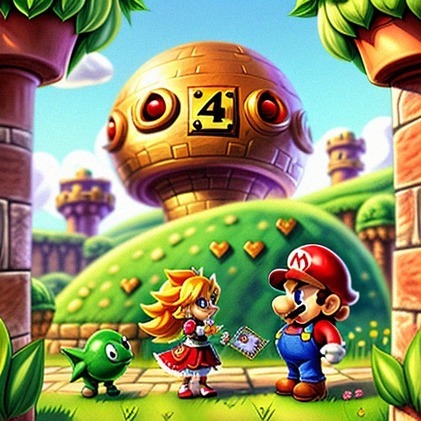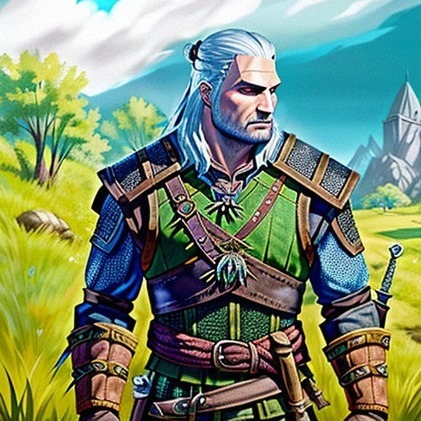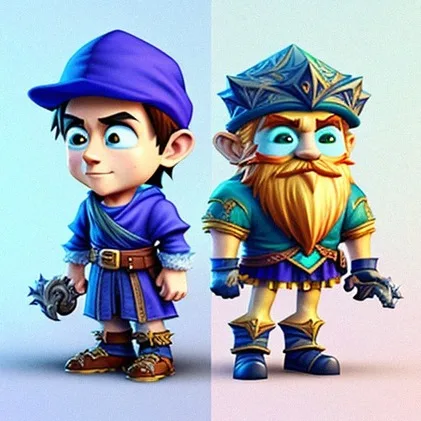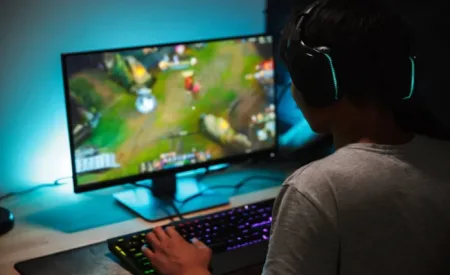The Evolution of Animation
From simple hand-drawn cartoons to today’s digital animations, animation has changed a lot. People often discuss the differences between 2D and 3D animation. Both are good, but 3D animation is becoming more and more popular in games.
We will talk about why 3d animation is better than 2d for game art outsourcing industry, but let’s start with the basics.
A Journey from 2D to 3D:
- 2D Animation: This is the traditional form of animation where everything happens on a flat plane. Think of classic games like “Super Mario Bros” or “Pac-Man”. These games are iconic and have a nostalgic charm. They were created using sprites – 2D bitmap graphics.

- 3D Animation: Fast forward to the present day, when we have games like Assassin’s Creed and The Witcher 3, which boast huge open worlds, realistic characters, and dynamic environments. This is made possible by 3D animation, where characters and environments have depth and can be viewed from different angles.

Realism and Depth
3D animation feels deeper than 2D. It makes moving images look more real. This real feel is important in games.
The depth and realism of the 3D animation really improve the gameplay, but it’s the introduction of an extra dimension that makes it truly unique. This extra dimension revolutionises movement and perspective in gameplay.
The Third Dimension – Z-Axis:
- 2D Animation: In 2D games, characters and objects move either horizontally (X-axis) or vertically (Y-axis). Think of games like “Flappy Bird” where the bird moves up and down in a flat environment.
- 3D Animation: 3D introduces the Z-axis, which means characters and objects can move forward and backward, in addition to up, down, left, and right like madalin stunt cars 2.
3D animation’s depth perception allows for more engaging gameplay. In racing games like “Need for Speed” or “Gran Turismo”, the depth allows players to evaluate distances, making overtaking and turning more realistic.
Shadows and Lighting comparison
One of the standout features of 3D animation is its ability to handle complex lighting and shadows. In games like “The Last of Us Part II“, the play of light through trees, the reflection on water surfaces, and realistic shadows of moving objects add to the game’s realism.
Regarding Camera Movement and Angles – in 3D games, the camera isn’t static. It can pan, tilt, zoom, and rotate, offering various perspectives. For instance, in “God of War”, players can rotate the camera to explore the environment, find hidden items, or strategize their next move based on enemy positions.
Flexibility and Dynamism
3D animation lets creators move things in many ways. They can make big camera moves and add lots of details. This movement is important in games where players want things to move smoothly.
Conveniently, it is also possible to find cool outsource animation services for 3d and 2d models both.
But still, you will be able to meet a lot more different supporting services just to work with 3d animation
Cost and Complexity
3D animation can be costly at first, but it’s worth it. 2D animations focus more on the story and less on looks. But 3D animations focus on how things look. They use many details and movements. This makes games feel richer.
While 2D animation has its origins in traditional storytelling, 3D animation has become a powerful tool for creating visually rich game effects.
But what does this mean in terms of investment and production volumes?
1. Initial Costs
- 2D Animation: 2D animation usually costs less at the start. The tools and software are cheaper, and artists can learn faster. For example, making a 2D character for a game means drawing the character in different poses.
- 3D Animation: Starting with 3D can cost more. It needs better software, strong computers, and sometimes special technology. Making a 3D character for a game means building, coloring, setting up, and then moving the character, which takes time.
2. Story vs. Aesthetics
While 2D games like “Undertale” or “Stardew Valley” focus heavily on narrative and may have simpler graphics, 3D games like “The Witcher 3” or “Red Dead Redemption 2” provide a visually detailed world. The emphasis here is not just on the story but also on creating a lifelike environment for players to explore.
3. Long-term Value
Though 3D animation may have higher upfront costs, the assets created, such as character models or environments, can be reused and repurposed for sequels, spin-offs, or other projects. This reuse can offset the initial investment over time.
The time and Efficiency point is that 3D animation can take time at first, especially when making characters. But after that, it gets faster. This speed is good for games, especially when making new versions.
Some Practical Advice from Game Art outsource studio RetroStyle Games:
- Budgeting: Always allocate a realistic budget for game development. If you’re leaning towards 3D, take care to consider all the tools, software, and skilled staff you’ll need.
- Training: Invest in training. Whether it’s 2D or 3D, having a team familiar with the latest technologies and tools is invaluable.
- Feedback: Before finalizing your game, gather feedback. Sometimes a simpler 2D design can resonate more with your target audience than a complex 3D one.
- Future-Proofing: If you are investing in 3D, think about how you can use those assets in future projects. This foresight can provide a better return on investment in the long run.
The Future of Gaming is 3D
The gaming world has moved from 2D to 3D animation. 3D offers more depth and looks more real. Even though starting with 3D can be more expensive, it’s worth it in the long run because of the better look and feel it offers. Both game makers and players benefit from this change from 2D to 3D.



